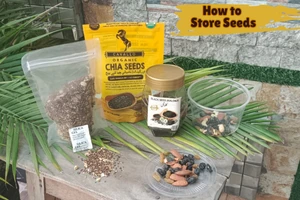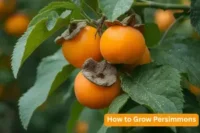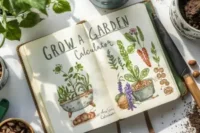What Are the Stages of Seed Germination? Step-by-Step Guide
Published: 22 Nov 2025
Hi, nature explorer!
Doesn’t it feel magical when a tiny seed buried in the soil transforms into a green, thriving plant? The process behind this transformation is called seed germination, and it happens in a series of essential steps. Understanding the stages of seed germination helps gardeners and beginners grow healthy plants successfully. Each stage plays a crucial role in a plant’s life cycle, from soaking up water to sprouting tiny leaves.
Hi, I’m Sheila, and I have spent seven years in botany research, studying how plants grow and flourish. My experience has helped me understand the fascinating science behind seed germination and how different factors affect it.
In this article, we’ll explore the stages of seed germination, including how seeds absorb water, grow roots, push their shoots toward the sunlight, and troubleshoot common germination problems. Let’s move forward!
What Are the Stages of Seed Germination?
Have you ever wondered how a tiny seed turns into a big, healthy plant? It all starts with germination, a natural process that brings seeds to life! Every plant begins its journey as a tiny, sleeping seed. But when the right conditions—water, air, and warmth—are provided, the seed wakes up and starts growing.
Let’s explore the fantastic steps of seed germination, where a tiny seed transforms into a beautiful seedling!
Don’t judge each day by the harvest you reap but by the seeds that you plant.”Robert Louis Stevenson
Stage 1: Seed Absorbs Water (Imbibition) 💧
Imagine a dry sponge. When you add water to it, the sponge swells up. The same thing happens to a seed! This first step is called imbibition, where the seed soaks up water from the soil.
- Water softens the seed coat (the hard outer covering of the seed), making it easier for the baby plant inside to grow.
- The inside of the seed starts swelling and expanding as it fills with water.
- Special chemicals inside the seed activate, signaling it’s time to start growing.
Personal Insight: I’ve noticed that seeds with a tougher coat, like beans, often germinate faster if soaked in water for a few hours before planting. This little trick helps speed up the imbibition process!
Stage 2: Activation of Enzymes and Respiration 🔥
Now that the seed is full of water, it wakes up! Think of it like a sleeping person who just had a big glass of water and is ready to start the day!
- Special enzymes (tiny helpers) start breaking down stored food (mostly starch and proteins) inside the seed.
- The baby plant gets energy from this food, helping it grow.
- The seed also starts to breathe by taking oxygen from the dirt and exchanging carbon dioxide.
Tip: If the soil is too wet or lacks air, the seed won’t be able to breathe correctly, and germination may fail. That’s why loose, well-drained soil is best for seed growth!
Stage 3: Root Emergence (Radicle Growth) 🌿
Now comes an exciting part! The first root, the radicle, breaks through the seed coat and pushes into the soil. This is like a baby grabbing onto something to stand up for the first time!
- The radicle grows downward, searching for water and minerals.
- Tiny root hairs start forming, which helps absorb more water.
- The seed anchors itself into the soil so it doesn’t move.
Personal Insight: I remember the first time I sprouted radish seeds in a damp paper towel. Watching the tiny white roots emerge felt like witnessing a miniature underground adventure!
Step 4: Shoot Emergence (Plumule Growth) ☀️
Once the root is settled, it’s time for the baby plant’s shoot (plumule) to grow! This part of the plant will later form stems and leaves.
- The plumule (baby stem) pushes upward, trying to reach sunlight.
- It breaks through the soil like a baby chick breaking out of an eggshell!
- The first seed leaves (cotyledons) appear. These leaves store extra food to help the plant grow until it can make its food.
Tip: If the seed is planted too deep, the shoot might struggle to reach the surface, so always plant seeds at the correct depth!
Stage 5: Seedling Stage 🌱
At this stage, the seed has become a young plant (seedling)! Now, it’s ready to start making its food through photosynthesis—plants use sunlight to create energy.
- The true leaves start growing differently from the first seed leaves.
- The roots spread out, collecting more water and nutrients.
- The stem gets stronger, and the plant prepares for further growth.
Tip: If the seedling gets enough sunlight, water, and air, it will grow into a healthy, mature plant! But it may grow weak or even die if it doesn’t get proper care.
All the flowers of all the tomorrows are in the seeds of today.Indian Proverb
10 Essential Tips for Successful Seed Germination
The below-mentioned tips will help your seeds grow into strong, healthy plants! 🌿✨
- Use High-Quality Seeds: Always choose fresh, high-quality seeds for better germination rates. Old or damaged seeds may not sprout well.
- Pre-Soak Hard Seeds: Soaking seeds in water for a few hours can speed germination by softening the seed coat.
- Provide Proper Moisture: Keep the soil moist but not soggy. Overwatering can cause seeds to rot before they sprout.
- Maintain Ideal Temperature: Most seeds germinate between 65–75°F (18–24°C). Check your seed packet for specific temperature needs.
- Ensure Good Air Circulation: Proper airflow prevents mould and fungal infections, keeping seeds healthy as they sprout.
- Plant at the Right Depth: Always sow seeds at the depth recommended on the seed packet. If planted too deep, seeds may struggle to break through the soil and sprout properly.
- Choose Well-Draining Soil: Use a light, well-draining seed-starting mix to prevent waterlogging and encourage strong root growth.
- Label Your Seeds: If you are planting multiple seed types, label them to keep track of germination progress and avoid confusion.
- Give Them Enough Light: After sprouting, ensure seedlings get 12–16 hours of bright light daily from sunlight or artificial grow lights.
- Be Patient and observe: Germination takes time! Check for signs of growth daily and adjust water, light, or temperature as needed.
| Trivia Facts |
|---|
1: Watermelon Seeds Germinate Best in Warm Soil:
2: Some seeds need fire to germinate! 🔥
3: Germination speed depends on the seed size!
|
Conclusion📝
The seed germination stage showcase life’s fantastic journey inside a tiny seed. Each stage is crucial for a plant’s healthy growth, from absorbing water to sprouting roots and leaves. Understanding these steps helps gardeners, students, and beginners nurture their seeds successfully.
I always use fresh, high-quality seeds in well-draining soil with proper moisture and warmth. Beginners can start with easy-to-grow seeds like beans or sunflowers for a rewarding experience.
Now that you know the steps of seed germination, plant your seeds and explore more tips on seedguides.com! 🌱🚀
FAQs: Understanding the Steps of Seed Germination
Seed germination is fascinating, but you might still have questions about how it works. Below are some common questions with simple answers to help you better understand how seeds grow into healthy plants.
Water weakens the seed coat, allowing it to absorb nutrients and expand. It also activates the enzymes inside the seed, which help break down stored food for energy. Without water, the seed remains dormant and cannot start the germination process.
Seeds can germinate without soil if they have moisture, oxygen, and the right temperature. Many seeds sprout in wet paper towels or hydroponic systems. However, they eventually need soil for nutrients and support to grow into a vigorous plant.
The time varies depending on the seed type, but most take 3–14 days to sprout. Some seeds, like radishes, germinate in just a few days, while others, like peppers, take longer. Temperature, moisture, and seed quality also affect how fast germination happens.
Yes, the basic germination steps—water absorption, root emergence, shoot growth, and seedling development—are the same for all seeds. However, some seeds, like monocots and dicots, grow slightly differently, and environmental conditions also affect the process.
| Reference Sources |
|---|
|

- Be Respectful
- Stay Relevant
- Stay Positive
- True Feedback
- Encourage Discussion
- Avoid Spamming
- No Fake News
- Don't Copy-Paste
- No Personal Attacks

- Be Respectful
- Stay Relevant
- Stay Positive
- True Feedback
- Encourage Discussion
- Avoid Spamming
- No Fake News
- Don't Copy-Paste
- No Personal Attacks





